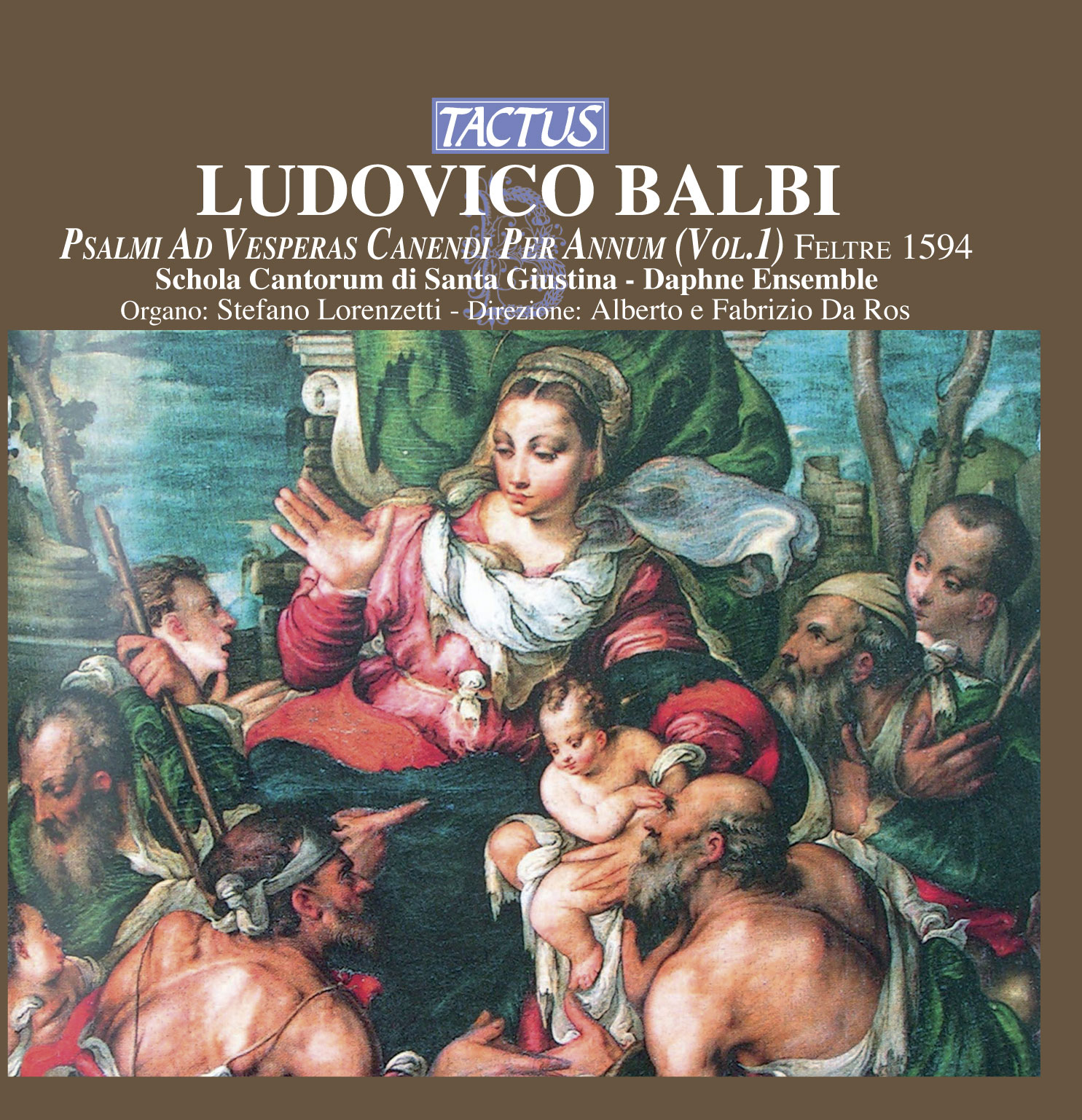BALBI LUDOVICO
With this recording Schola Cantorum of Santa Giustina Bellunese offers a wide view of the contents of the manuscript A.C.F.M.R.
16 preserved in the archives of the FeltreCathedral entitled LUDOVICO BALBI / MAGISTRI CAPPELLAE FELTRENSIS / PSALMI AD VESPERAS / CANENDI / PER ANNUM, of which the complete transcription, transcribed by the undersigned, has been published by Pro Musica studium this year.
It is the first of three CDs of the complete recording of psalms and magnificats contained herein.
The manuscript is almost certain to be an only copy.
In fact, no references are made in main repertoires, to other documents, which wholly or partially contain the same music, and it may be an autograph.
The verses in the figurative singing of the psalms and magnificats are performed in alternatim with those in cantus planus.
This practice is applied also by alternating the performance of Balbi”s verses to that of organ verses of the same period.
Stefano Lorenzetti”s performance of the organ verses took place in the Callido of the Feltre Cathedral.
Perhaps for the first time, on a modern recording, it was decided that the practice of alternatim between the organ and polyphonic verses be reintroduced.
This custom, widely attested to by sources of the same period, has recently been brought to the attention of scholars again by Arnaldo Morelli.
In as much as type, in adherence to the period and the writing of Salmi by Balbi, the choice was made to use verses mainly of the polyphonic type with explicit, even though sporadic, references to fragments of cantus planus: this is the case of Intavolatura facilissima, which can deductively be attributed to Luzzasco Luzzaschi”s writing, and Versetti spirituali by the Neapolitan Antonio Valente.
In the case of the latter, the traditional contrapuntal role is revived by sporadic figurations of more idiomatically manifested instrumental writing (see. i.e. IV Verse Sopra il re).
A structure centered on the even more systematic polyphonic amplificatio of the gregorian melody marks the verses by the Magnificat of Cavazzoni and Diruta.
For the performance of the polyphonic verses the Schola Cantorum followed the performance procedure of the period, which, as stated, made use of white voices or acute male voices for the cantus part and only male voices for the inferior parts.
In the performance of certain psalms an experimental doubling of parts with bowed instruments was desired, guided by the documented historical use of these instruments by the music chapel of the Feltre Cathedral in the second half of the 16th century.
In this regard, a resolution of the Chapter in 1565 specifies, among other things, that in as much as decisions relative to the compensation of musicians, singers were permitted to “spend their earnings, as needed, to purchase a set of violas.”
Tracklist
Gabrieli, Giovanni
Toccata
1 - Toccata (3:28)
Balbi, Lodovico
Psalmi ad Vesperas Canendi per Annum
2 - Laetatus sum (5:02)
3 - Laudate pueri (9:55)
Gabrieli, Giovanni
Fantasia VI toni
4 - Fantasia VI toni (3:14)
Balbi, Lodovico
Psalmi ad Vesperas Canendi per Annum
5 - Beatus Vir (4:45)
6 - Memento Domine (14:04)
Cavazzoni, Girolamo
Hymnus in Festo Confessorum
7 - Hymnus in festo confessorum (2:11)
Balbi, Lodovico
Psalmi ad Vesperas Canendi per Annum
8 - Psalmi ad Vesperas Canendi per Annum: Nisi Dominus (3:35)
Cavazzoni, Girolamo
Hymnus Ave Maris Stella
9 - Hymnus Ave Maris Stella (3:15)
Balbi, Lodovico
Psalmi ad Vesperas Canendi per Annum
10 - De profundis (4:11)
11 - Magnificat I toni (10:23)
- Composer: BALBI LUDOVICO
- Performers: Schola Cantorum di Santa Giustina · Daphne Ensemble · Stefano Lorenzetti, organ · Alberto e Fabrizio Da Ros, conductors
- Historical Period: Humanism and Renaissance
- Code: TC 540201
- Edition: April 2007
- Barcode: 8007194104103
- Set: 1
- Total tracks: 11
- Total duration: 01:04:03






